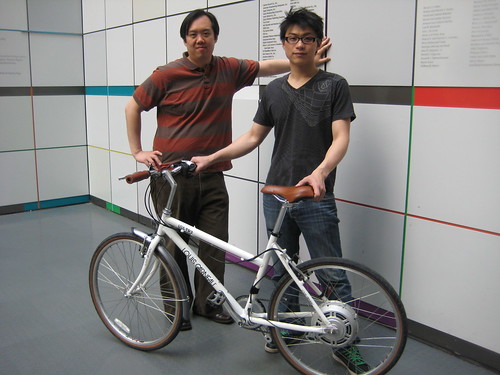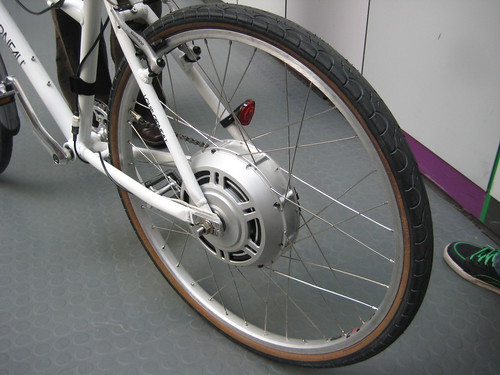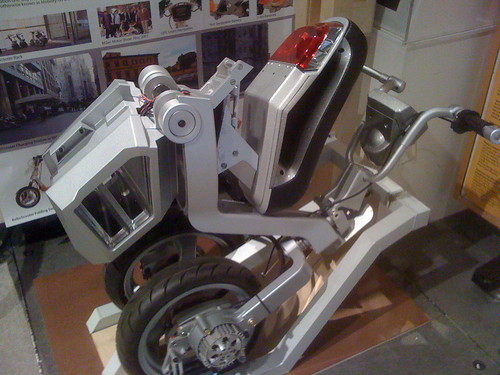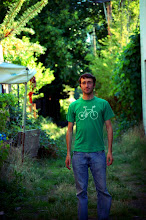We examine intelligent, sustainable buildings, mobility systems, and cities, with a focus on new technologies for efficient use of urban energy, sustainability, and cultural creativity.
For the past few years they've been working on "wheel robots," which are basically wheels which incorporate the motors and suspension in the wheel itself. They've applied this technology to a few different projects which are in various states of development. Ryan and Michael showed me their GreenWheel project first.

Basically, they've taken off the back wheel of a bicycle and replaced it with one of their "wheel robots" turning it into an electric bike. Unlike other electric bikes though, the battery and motor are all in-wheel which means it doesn't need any wiring and the throttle can be controlled by a wireless remote on the handlebar.

I took the prototype for a spin around the block, and it's got a surprising amount of power. I was zipping along at over 15 miles per hour, though they say it can go close to 20 MPH. They're talking to a few companies about getting the GreenWheel to market in a few different ways. They could sell it as a complete bicycle or they could just sell the wheel which could then be attached to any other bike with a simple conversion. They're very interested in using it in bike share programs similar to ones that exist in DC and Paris.
Next Ryan showed me the RoboScooter, an electric scooter with robot wheels that folds in half.

They have two prototypes so far, though neither was available to ride when I stopped by. It goes about 35 miles per hour, and they'd like to see share programs set up for these as well. The RoboScooter probably won't be available for another two years or so, but you can see it in action here:
And lastly Ryan showed me a few prototypes-in-progress for the CityCar- their most ambitious "wheel robot" project. By putting these smart wheels on a car, it changes pretty much everything. When each wheel has its own motor and suspension you no longer need a drive system or pedals or even a steering wheel. Each wheel can move independently allowing for parallel parking or for the car to rotate in circles. These two seaters would open from the front, and even fold themselves up for parking. I saw a few different prototypes they had built to test different aspects of the CityCar- one testing the steering (which looked more like a videogame joystick), one testing the wheels, and one testing the folding ability. They're currently working on building a small-scale operational version of the vehicle. Here are some early computer animations that give you an idea of what the completed car would look like:
It was inspiring to see so many smart people working on all these exciting projects. The Smart Cities team is passionate about creating sustainable transportation, and they don't stop at vehicle creation. They're also working out the details for the share programs where they envision their vehicles being used. Ryan even showed me a chart which calculated how to use a flexible price model in order to keep the vehicles properly distributed around a city. It's not a huge team, and they're not working with big budgets, but they're doing some serious innovation. Instead of handing over hundreds of millions to the car companies, couldn't we just give a few million to these guys?

On a side note- when I was walking through the Boston Public Gardens I saw ducklings in the pond! Which is special because the gardens are the inspiration for the classic book, Make Way for Ducklings. If only I could harness the cuteness of ducklings to power a vehicle...



No comments:
Post a Comment